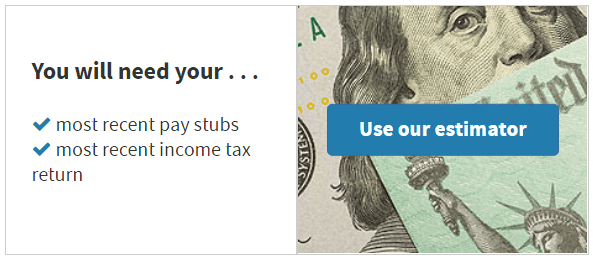The IRS W-4 form (Employee Withholding Allowance Certificate) is the form employees fill out and give to their employers. From that information, employers calculate the amount of money to withhold from your paycheck for taxes. If too little is held out, you could owe more taxes and even get hit with an IRS penalty.
What’s different about the IRS W-4 Withholding Form?
The Tax Cuts and Jobs Act of 2017 put the responsibility for correct, up-to-date W-4 information on the employee. Before December 2017, the payroll or human resources department did a pretty good job of keeping information current. W-4s were updated during the year to reflect address changes, the birth of a child or change in marital status, and other events that would increase or decrease payroll withholdings. But things have changed, and as an employee and a taxpayer, it’s your job now.
The IRS encourages taxpayers to consult a trusted tax professional. If you’ve never consulted a tax specialist, this is the year to do it. Mid-year is also a critical time to review your business tax position and make any necessary adjustments to your strategies. The Tax Cut and Jobs Act of 2017 is still changing, and a mid-year tax review and checkup could keep you from having any unpleasant year-end tax surprises.
Contact us for details
IRS W-4 Withholding Form
734-285-6008
Use our contact form
The IRS urges everyone to check their withholding
There are a variety of reasons to check your withholdings. This checklist provides some circumstances you may not have considered:
- Are you a two-income family or someone with multiple jobs? You may be more vulnerable to withholding too much or too little. Withholding too much could deprive you of needed money during the year. Too little could leave you owing more than you can handle.
- Do you work a seasonal job or only work part of the year? Any changes you make to your withholding can affect each paycheck in a more significant way than if you work year-round. The IRS Tax Withholding Estimator helps you estimate income, credits, adjustments, and deductions more accurately.
- Do you claim the child tax credit? The Tax Cuts and Jobs Act of 2017 expanded and made significant changes to the Child Tax Credit. It also suspended the deduction for personal exemptions and made changes relative to parents and caregivers.
- Do you have dependents age 17 or older at the end of 2019? If so, you can’t claim that child for the Child Tax Credit, but taxpayers may qualify for the Credit for Other Dependents. This new credit offers up to $500 per eligible dependent and begins phasing out at $400,000 for joint filers and $200,000 for other taxpayers.
- Do you usually itemize deductions? The TCJA of 2017 nearly doubled standard deductions and changed several itemized deductions. Some individuals who formerly itemized may now find it more beneficial to take the standard deduction. This change could affect how much a taxpayer should have their employer withhold from their pay.
- Do you have a high income or a complex tax return? Not that either one is a “bummer” or a negative, but a Paycheck Checkup is especially crucial for you. New tax laws can catch you in any number of situations, so you need to be proactive. A Paycheck Checkup is also essential for taxpayers who make quarterly estimated tax payments to cover other sources of income, or for those who are subject to the self-employment tax or alternative minimum tax.
- Did you have a large tax refund last year? Oops, allowing the IRS to use your money (interest-free, of course) is not a favor they’re likely to return. You certainly don’t want to under-withhold on your W-4, but like most people, you could probably use your own money during the year. Calculating your withholdings and proactively controlling your tax liabilities is a good, solid plan.
- Did you own a tax bill last year? That too is a big oops. There is no reason you should miss this critical Paycheck Checkup and make necessary changes.
The IRS provides an online estimator
The Tax Withholding Estimator helps you determine whether you need to give your employer a new Form W-4, Employee’s Withholding Allowance Certificate (PDF). You can use your results from the Estimator to help fill out the form and adjust your income tax withholding. If you receive pension income, you can use the results from the estimator to complete a Form W-4P (PDF) and give it to your payer. 
Click image to take you directly to the IRS website.
The IRS reminds us that during this year they anticipate making further changes involving withholding. Remember too, that your employer’s payroll office or human resources department is responsible only for processing the W-4 form you provide. It’s important to remember people working in these offices do not know the rest of someone’s personal financial situation, and they are not responsible for giving you tax advice. The IRS also encourages employees who have tax questions should consult a trusted tax professional.
We look forward to being your trusted tax professional
Taxes are no longer a DIY project. Tax laws continue to change, and we closely follow and study new developments. We are tax professionals and as your complete personal tax, financial, and retirement guide, we’re by your side to help you achieve your goals.
“We are your solution-driven answer. Contact us. Problem solved.”
Terri McLain
Call us: 734-285-6008
Or Schedule an Appointment

